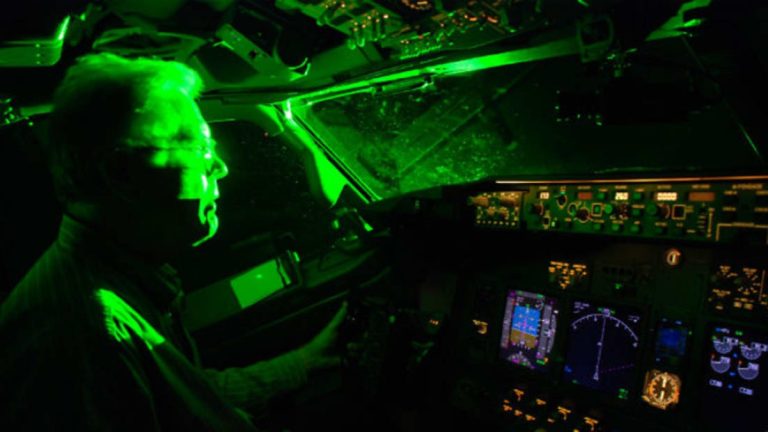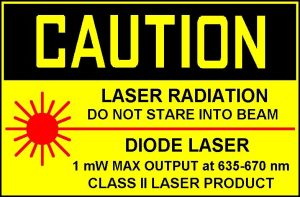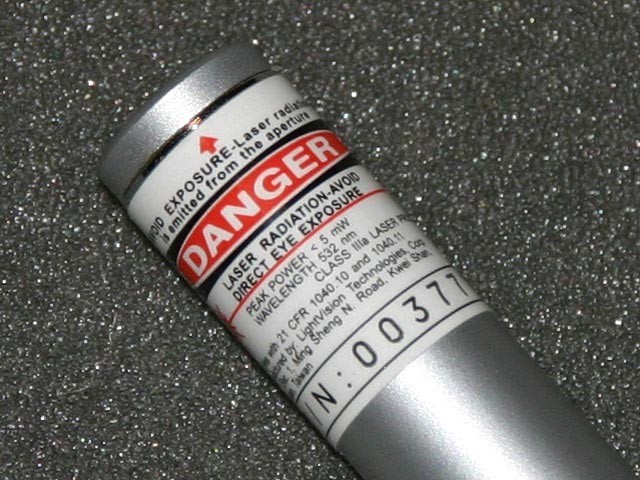
Local pilots have reported incidents in which laser pointers were directed at aircraft operating in the vicinity of Secunda. Such conduct is hazardous and may distract or temporarily incapacitate flight crews, creating a risk of serious accident or loss of life. The Bulletin received video evidence of an incident; authorities traced the source to a residence on Tsitsikamma Street. The precise address is withheld pending ongoing legal processes.
Regulatory Advisory:
The South African Civil Aviation Authority (SACAA) has issued a formal warning: the deliberate illumination of aircraft with laser devices is dangerous, unlawful and subject to severe administrative and criminal sanctions.
Aviation Safety Risks Laser illumination directed toward aircraft or air traffic control personnel presents the following operational hazards:
- Distraction and disorientation:
- Laser exposure during critical flight phases (take-off, approach and landing) can divert pilot attention from essential flight duties.
- Temporary or permanent visual impairment:
Direct exposure to laser radiation can cause flash-blindness or retinal injury, diminishing a pilot’s ability to control the aircraft.
- Increased susceptibility at night: reduced ambient light amplifies the effects of laser illumination, elevating risk during night operations.

Interference with air traffic services:
Laser incidents may affect ground-based personnel and equipment, increasing the risk of miscommunication or procedural error.
Legal Framework and Penalties:
Under South African civil aviation regulations, directing any light source, including laser pointers, toward aircraft or air traffic control installations is prohibited. Offenders may be subject to: Substantial fines; and/or Criminal prosecution, which may include imprisonment of up to ten years, depending on the circumstances and applicable statutes.
Reporting Procedures SACAA requests that members of the public report laser illumination incidents through the Centralised Occurrence Reporting Portal. Reports should include: date, time, precise location, a description of the device used, and any available identification or descriptive information regarding the person(s) involved.
Guidance for the Public
- Do not point laser devices at aircraft, air traffic control towers, or any aviation personnel.
- Report any instance of laser illumination of aircraft immediately via the SACAA portal.
- Promote community awareness regarding the hazards and legal consequences of misusing laser devices.

power (in mW), and wavelength (in nm).
Safety Guidance for Laser Pointer Users
Overview:
When used appropriately for visual aids, compliant laser pointers can be safe. Misuse, however, can result in eye injury and create hazardous situations. Where practicable, presenters should consider electronic on-screen pointer functions as a safer alternative.
Selection and Operation
- Prefer low-power devices (Class 2) that emit less than 1 mW; these present a lower risk of injury from inadvertent, brief exposure.
- Prefer red-wavelength devices (approximately 633–690 nm). Green and blue pointers (notably 532 nm green devices) have been shown in some inexpensive models to emit hazardous levels of infrared radiation due to inadequate filtering and may produce persistent retinal after-images; blue wavelengths (400–500 nm) also raise photobiological concerns.
- Use a momentary-contact (spring-loaded) on/off switch. Devices with locking mechanisms that maintain continuous emission are discouraged.
Identification and Labelling:
Only use laser pointers that carry a clear regulatory warning label indicating class and output power. Avoid unlabeled devices, as these may exceed safe power levels.
Operational Safety Practices
- Direct the beam solely at inanimate targets (e.g., presentation screens). Never point a laser at a person, animal, or reflective surface. Reflections can be equally hazardous.
- Do not view laser beams through optical instruments (binoculars, telescopes, microscopes), which can concentrate energy and increase the hazard.
- Keep laser devices out of reach of unsupervised children.
- Ensure the device ceases emission immediately upon release of the switch; do not employ pointers fitted with locking mechanisms that sustain the beam.
Avoiding Accidents.
Even low-power lasers can produce glare, flash-blindness or after-images sufficient to cause accidents.
To reduce risk: Never aim laser pointers at aircraft, vehicles, drivers, or law enforcement officers. Do not aim laser pointers inside occupied buildings or toward public thoroughfares.
Conclusion:
Deliberate or negligent use of laser pointers toward aircraft is a serious public-safety and legal matter. Compliance with regulatory requirements, adoption of safe equipment and operational practices, and prompt reporting of incidents are essential to protect pilots, passengers, air traffic personnel and the broader public.